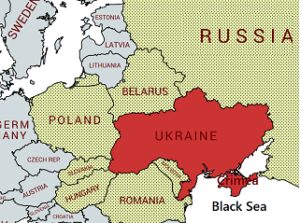
Arquivo para February 8th, 2022
Little history of Ukraine
In the 3rd century the region was inhabited by the Goths (250-375), the region was called Aujo, there was a Cherniacove culture there, the Ostrogoths settled in 350 with the influence of the Huns, to the north there was a people who had a Kievan culture (then later Kyiv or Київ).
the region was called Aujo, there was a Cherniacove culture there, the Ostrogoths settled in 350 with the influence of the Huns, to the north there was a people who had a Kievan culture (then later Kyiv or Київ).
The origin of today’s Ukraine is in Slavic tribes that arrived in this territory in the 5th and 6th centuries, in the 9th century Viking invaders arrived, called Varigi, the Mongols invade in the 13th, King Igor I with a young Varigi teenager named Olga united the peoples, this kingdom called Rus had Kiev as its capital, the king will be killed and Olga takes power with great vigor and courage, and dominates the peoples, Olga will occupy a special role and then convert to Christianity with great work in favor of the poor .
Olga is a separate chapter, after being a strong queen and to a certain extent cruel to her enemies, her son takes over the kingdom and she converts to Christianity, built churches, carried out evangelization campaigns, but was unable, however, to convert her son. Sviatoslav (Svyatoslav I), helped the poor and sick people so much that he became a saint recognized by the Orthodox Church in the year and by the Catholic Church of the Byzantine Rite, his son did not convert, but his grandson Vladimir I converted and also was declared a saint.
The Variagi commanded several strategic points in Russia and explored transport and trade, so during the 10th and 11th century, the territory of Ukraine became the center of a powerful and prestigious state in Europe, called at the time Kiev Russia (recall was the kingdom of Rus) and were also the basis for many subsequent Slavic nations (such as Greater Bulgaria and Belarus, for example), in addition to the Russians themselves who were then just scattered Slavic tribes.
The state was conquered by Casimirio IV of Poland, while the heart of ancient Kievan Russia passed to the control of the Grand Duchy of Lithuania, but the marriage of Grand Duke Jagellan of Lithuania to Queen Hedwig of Poland, changed control of the sovereigns. Lithuanians to most of the Ukrainian territory and thus returned to Ukraine.
We take a leap into history, which is also rich in the medieval period, a civil war that lasted 4 years after the Russian revolution (1917) in 1921 Ukraine becomes a Soviet socialist republic, with purges and land grabs that Ukrainian farmers refused to deliver, Ukraine is a major grain producer.
The Stalinist period and the Nazi occupation of its territory, which caused more than 10 million deaths between 1930 and 1945, Ukraine resisted Russian collectivization and Nazi invasion, Ukraine in the Soviet period was responsible for ¼ of Soviet production in the agricultural sector producing 40 million cereals, a record for the time.
Finally, the problem of the Crimean territory, which has its origins in the war of 1853 and 1856 where there was a conflict between Russia and an alliance formed by France-United Kingdom-Kingdom of Sardinia (today part of Italy), in 2014 the war is reborn with the takeover by Russia, it should be clarified that there was a contract between Ukraine and Russia in a kind of leasing for the concession of the Balkan port where Russia’s largest maritime fleet is located, in Sevastopol, which was thus an independent territory of Ukraine.
Thus, among the most absurd analyzes is the one that says that Ukraine would be unviable as an independent state, it is weakened by an internal war and under Russian pressure.

